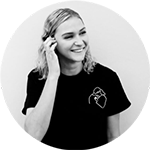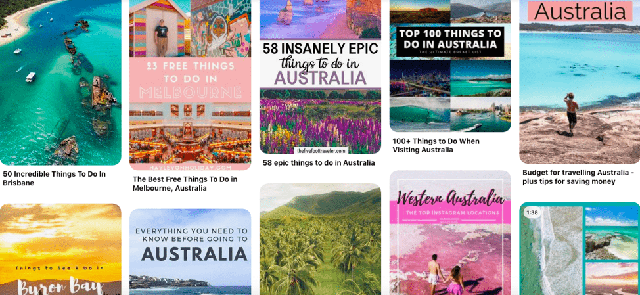Whether you’re a DIYer, looking for recipes, designing a house, or a budding bride to be, chances are you’ve found yourself seeking inspiration from one little platform that has it all. Pinterest is the perfect place for visual discovery, acting as a beautiful search engine for a broad range of topics.
So if you haven’t already, now is the time to wrap your head around this (I would argue) underrated social media platform to grow your blog and your audience.
Why use Pinterest to market your travel blog?

Travel is more popular on Pinterest than on any other platform, and unlike Instagram which is a mobile-only platform, it’s designed for both web and mobile usage. Pinterest’s other hidden weapon for bloggers is that it allows for backlinks.
Inundating your Instagram followers with beautiful images most likely won’t convert into website traffic because you can’t include links in your posts, making the acquisition process longer and harder for people seeing your content on Instagram.
Comparatively, if you start to publish “pins” on Pinterest, your audience will be automatically redirected to your blog when they click on the post.
These pins can then be saved in the form of an image to their own profile or Pinterest “board” making it visible to their followers, and if your content is good this process will go on and on as you get more “repins” (i.e. shares), continually driving traffic to your blog.

Designing Pinterest-ready content
As a travel blogger, creating beautiful content is what you’re best at. All this content, however, is probably not going to help grow your blog unless you’re also marketing that content.
To master Pinterest marketing for your blog you don’t have to be creating tons of new blog posts all the time, it’s as simple as creating lots of pins for each blog post to share on Pinterest.
After publishing a post on your blog, you can take a few of the relevant images from the post and head over to an easy design site like Canva to turn those images into Pinterest-ready works of art.
Scheduling and keyword optimization
Once you’ve carefully designed your pins, you’ll need to make a publishing schedule to ensure that you’re posting fresh content regularly. You can schedule your pins directly through Pinterest or if you’d prefer to batch schedule pins you can use a tool like Tailwind and schedule your posts in bulk every week/month.
Now it’s time to make sure you’re using keyword optimization to your advantage to make your content more discoverable. The most important place you can do this is in the title and description of your pins.
The main goal here is not to just dump in a bunch of relevant keywords, you want to draw people in and entice them to click through to your link.
You could determine your “board” titles by looking at the categories on your blog and the different types of content you post e.g. adventure travel, girls’ trip ideas, vegan travel, budget travel, or separate geographical areas you’ve written about.
Basically, you want your board names to tell Pinterest what you’re showcasing so that it can index your content and get it in front of people who are searching for your topic areas.
While you were reading about how awesome Pinterest is, thousands of people across the globe who are cooped up at home right now have delved into the glittery depths of the Pinterest world, dreaming about their near-impossible upcoming holidays and filling up with amazing travel inspiration.
Is your content there to inspire this huge audience that’s hungry for content?

